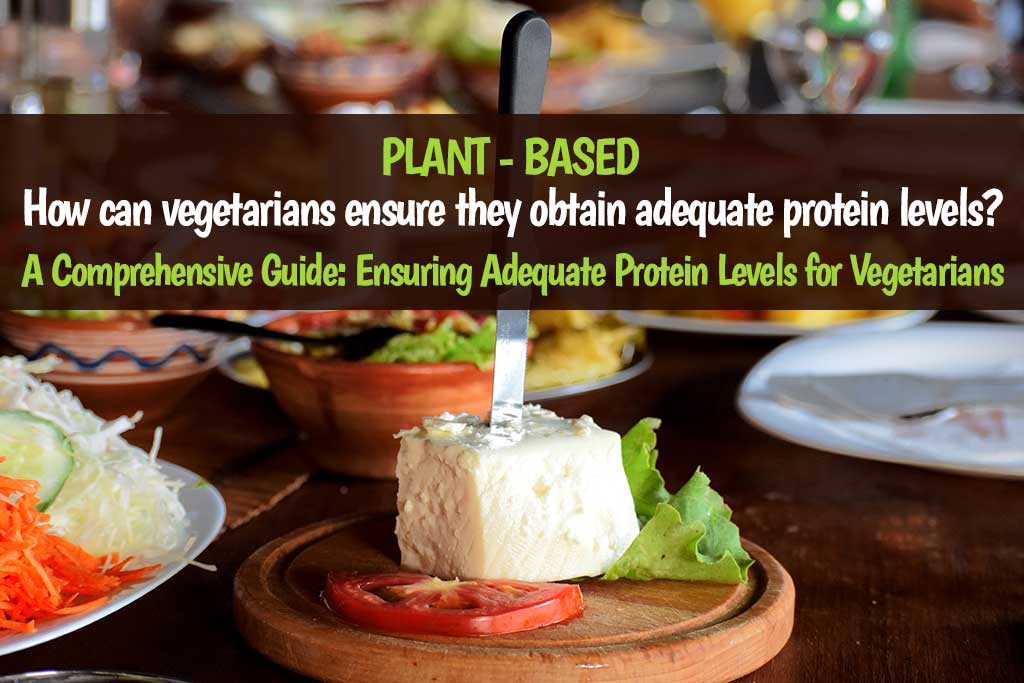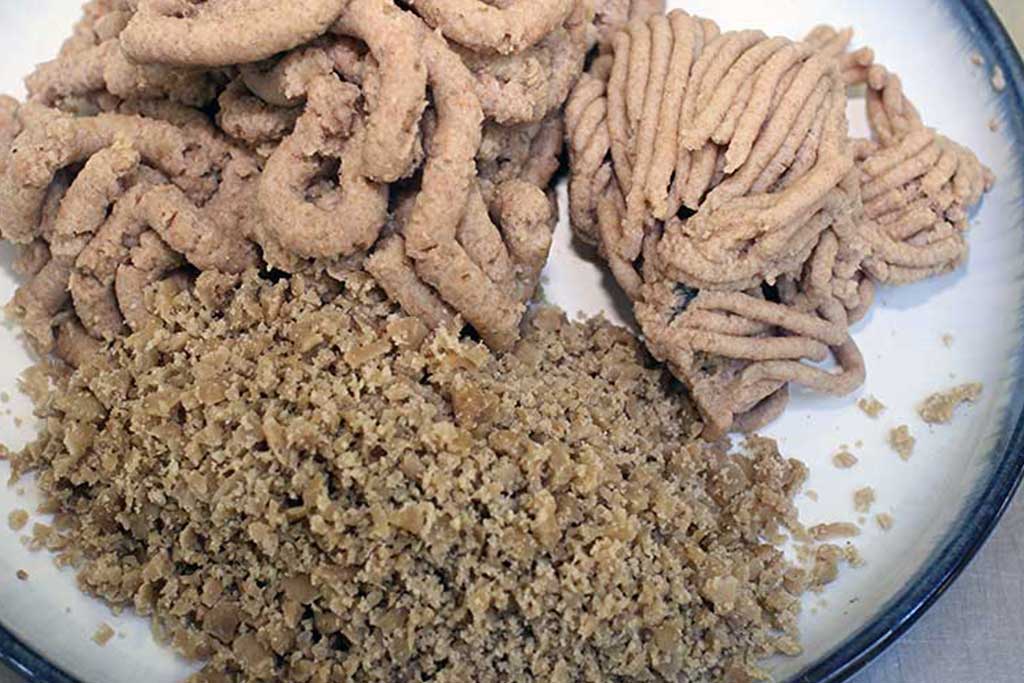How can vegetarians ensure they obtain adequate protein levels?
A Comprehensive Guide: Ensuring Adequate Protein Levels for Vegetarians
Table of Contents:
1. Introduction
2. The Importance of Protein for Vegetarians
3. Sources of Plant-Based Protein
3.1 Legumes: The Protein Powerhouses
3.2 Tofu, Tempeh, and Seitan: Versatile and Nutritious
3.3 Quinoa and Other Grains: A Protein Boost
3.4 Nuts and Seeds: Protein-Packed Snacking
4. Combining Protein Sources for Optimal Nutrition
5. Plant-Based Meat Alternatives: Bridging the Gap
6. Monitoring Protein Intake and Supplements
7. Conclusion: Thriving on a Plant-Based Protein Diet
8. Frequently Asked Questions (FAQ)
1. Introduction
In today’s article, we will delve into the world of vegetarian nutrition, specifically focusing on how vegetarians can ensure they obtain adequate protein levels to support their overall health and well-being.
As more individuals embrace vegetarian lifestyles for ethical, environmental, or health reasons, it’s important to understand the key components of a well-balanced vegetarian diet. One of these crucial components is protein, which plays a vital role in various bodily functions, including tissue repair, enzyme production, and the maintenance of a strong immune system.
However, concerns often arise about whether vegetarians can meet their protein needs without consuming animal products. The good news is that with careful planning and an understanding of plant-based protein sources, vegetarians can easily obtain the protein their bodies require.
In this comprehensive guide, we will explore a wide range of strategies and resources to help vegetarians ensure they receive adequate protein levels. We will discuss the importance of protein for vegetarians, explore various plant-based protein sources, highlight effective protein combining techniques, examine plant-based meat alternatives, address monitoring protein intake, and offer answers to frequently asked questions related to protein and vegetarian diets.
So, whether you are a long-time vegetarian looking to optimize your protein intake or someone considering a transition to a plant-based lifestyle, this article will provide you with the knowledge and tools necessary to thrive on a vegetarian diet without compromising protein needs.
Now, let’s dive into the world of vegetarian nutrition and discover how you can obtain optimal protein levels as a vegetarian.
2. The Importance of Protein for Vegetarians
Before we explore the steps to obtaining adequate protein levels, let’s understand why protein is crucial for vegetarians.
Protein is an essential macronutrient that plays a fundamental role in the body’s growth, repair, and maintenance processes. It is made up of amino acids, which serve as the building blocks for various tissues, including muscles, organs, and enzymes. Protein is also involved in the production of hormones, antibodies, and other essential molecules that keep our bodies functioning optimally.
For vegetarians, ensuring an adequate protein intake becomes particularly important since their diet excludes animal products that are typically high in protein. Without careful attention to protein sources, vegetarians may be at risk of not meeting their recommended daily protein requirements. Insufficient protein intake can lead to decreased muscle mass, weakened immune function, fatigue, and impaired wound healing.
However, with proper planning and knowledge, vegetarians can easily obtain the necessary protein to support their overall health and well-being.
It’s worth noting that although animal-based proteins contain all the essential amino acids in the right proportions, plant-based proteins can also provide all the essential amino acids when consumed in a well-balanced manner. By incorporating a variety of plant-based protein sources into their diet, vegetarians can ensure they meet their protein needs while reaping the benefits of a predominantly plant-focused eating pattern.
In the following sections, we will explore the numerous plant-based protein sources available to vegetarians and discuss effective strategies for incorporating them into a balanced diet. By incorporating these protein-rich foods into their meals and snacks, vegetarians can ensure they obtain the necessary protein levels to support their health and well-being.
3. Sources of Plant-Based Protein
Vegetarians have an abundant array of plant-based protein sources to choose from. Let’s explore some of the most nutritious options in detail.
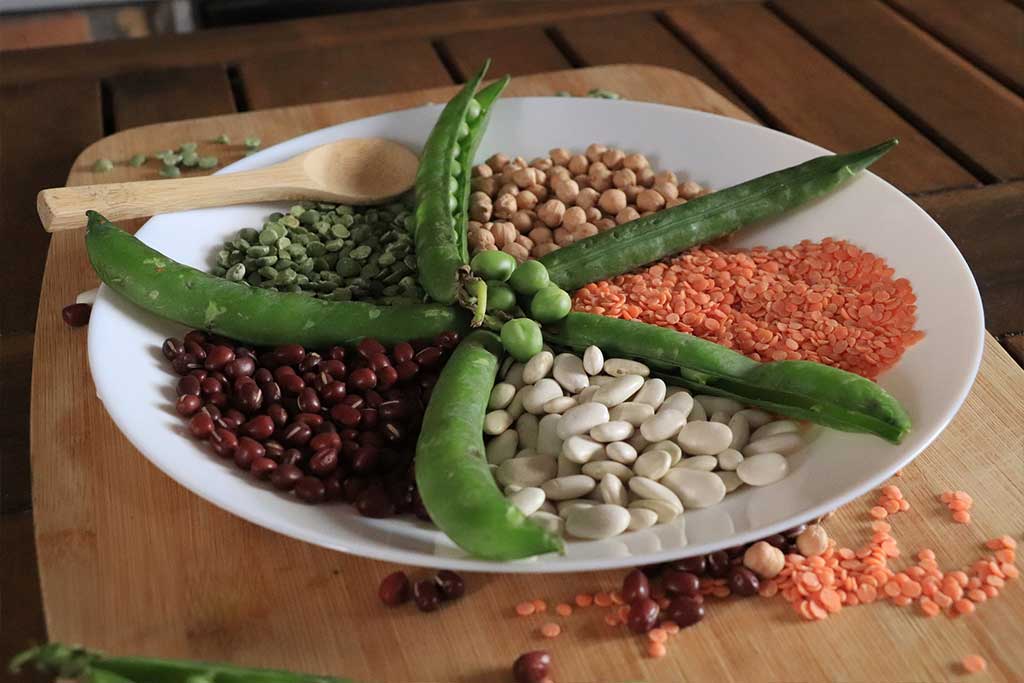
3.1 Legumes: The Protein Powerhouses
Legumes are a versatile and cost-effective source of plant-based protein. Let’s discover the various legumes and how to incorporate them into your diet.
Legumes, including beans, lentils, chickpeas, and peas, are nutritional powerhouses rich in protein, fiber, vitamins, and minerals. They provide an excellent foundation for vegetarian protein intake. For example, a cup of cooked lentils contains around 18 grams of protein, making it a substantial protein source.
To incorporate legumes into your diet, consider adding them to soups, stews, salads, or as fillings for wraps and burritos. You can also enjoy hummus (made from chickpeas), bean-based spreads, or lentil-based burgers for added protein and variety.
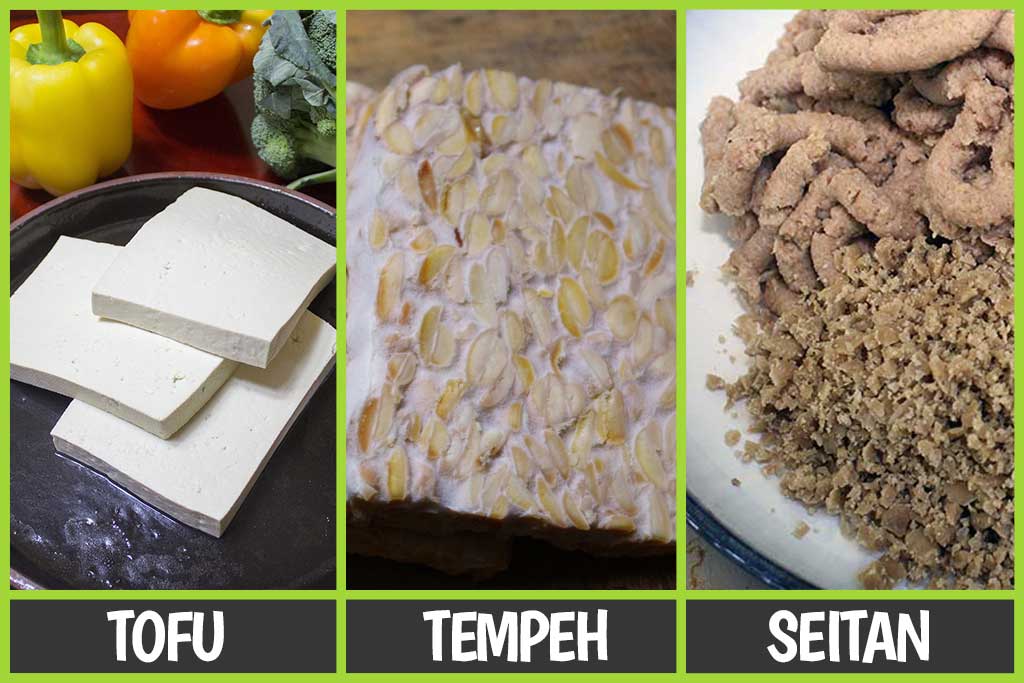
3.2 Tofu, Tempeh, and Seitan: Versatile and Nutritious
Tofu, tempeh, and seitan are plant-based protein alternatives that offer a satisfying and delicious way to meet your protein needs. Let’s explore their benefits and how to include them in your meals.
Tofu, made from soybeans, is a versatile protein source available in different textures, including soft, firm, and extra-firm. It absorbs flavors well, making it an excellent choice for stir-fries, curries, and marinades. A 3-ounce serving of tofu provides approximately 8 grams of protein.
Tempeh, fermented soybean cake, offers a nutty flavor and a firmer texture than tofu. It contains about 15 grams of protein per 3-ounce serving. Tempeh works well in stir-fries, sandwiches, and even as a meat substitute in burgers.
Seitan, also known as wheat meat or wheat gluten, is made from gluten, the protein found in wheat. It has a chewy texture and absorbs flavors beautifully. Seitan is an excellent protein source, with about 21 grams of protein per 3-ounce serving. It can be used in stir-fries, stews, and grilled dishes.
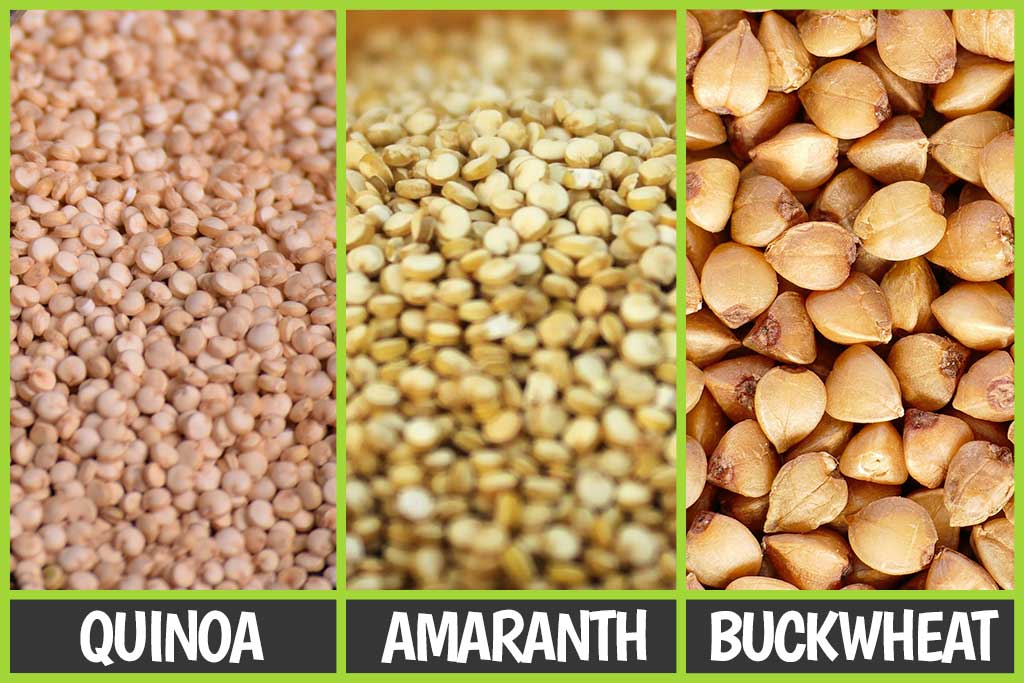
3.3 Quinoa and Other Grains: A Protein Boost
Grains like quinoa, amaranth, and buckwheat can significantly contribute to your protein intake. Learn about the protein content of these grains and how to incorporate them into your diet.
Quinoa, a pseudo cereal, is not only rich in protein but also contains all the essential amino acids, making it a complete protein source. It offers around 8 grams of protein per cooked cup. Quinoa can be used as a base for salads, grain bowls, or as a substitute for rice or couscous.
Amaranth and buckwheat are two other grains that provide notable amounts of protein. Amaranth offers approximately 9 grams of protein per cooked cup, while buckwheat provides about 6 grams. These grains can be used in porridges, baked goods, or as a side dish.
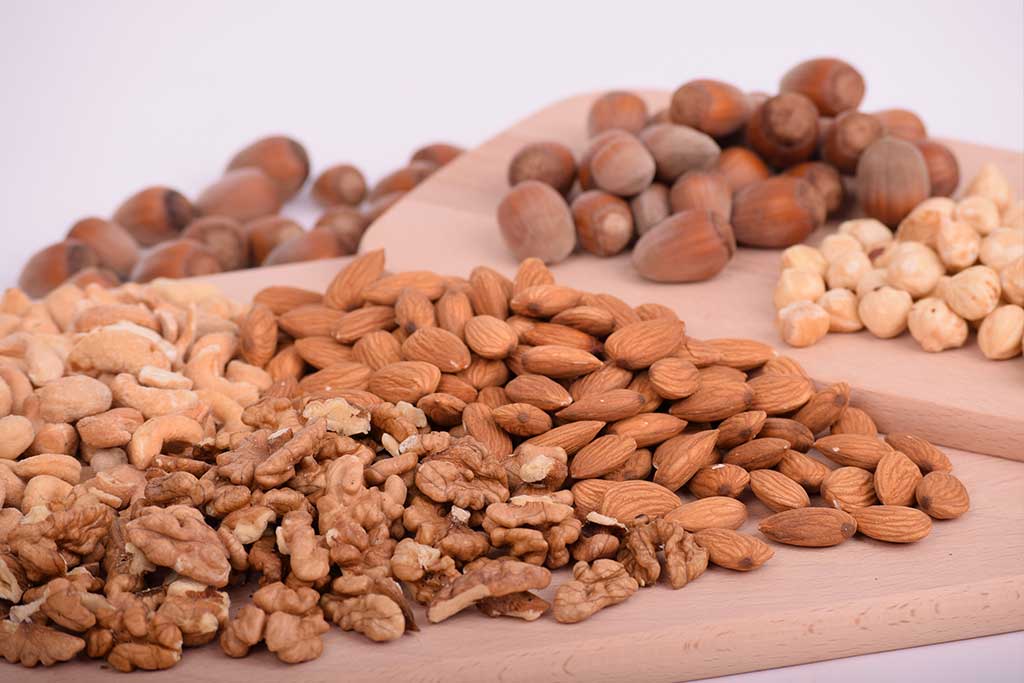
3.4 Nuts and Seeds: Protein-Packed Snacking
Nuts and seeds not only provide healthy fats but also contain valuable protein. Discover the nutrient-rich profile of various nuts and seeds and explore creative ways to enjoy them as snacks.
Nuts and seeds, such as almonds, walnuts, chia seeds, and hemp seeds, are excellent sources of protein and healthy fats. Almonds, for instance, offer about 6 grams of protein per ounce, while chia seeds provide approximately 5 grams of protein per ounce.
You can incorporate nuts and seeds into your diet by adding them to smoothies, sprinkling them over salads or yogurt, or enjoying them as a convenient and protein-rich snack. Nut butters, like peanut butter or almond butter, can also be a delicious and protein-packed addition to sandwiches or as a dip for fruits and vegetables.
By incorporating these diverse plant-based protein sources into your diet, you can ensure a well-rounded and sufficient protein intake as a vegetarian. In the next section, we will discuss effective protein combining techniques to further optimize your protein consumption.
4. Combining Protein Sources for Optimal Nutrition
Combining different plant-based protein sources can enhance protein quality and ensure a complete amino acid profile. Let’s explore the concept of protein combining and learn about effective combinations.
While it is true that some plant-based protein sources may lack certain essential amino acids, the concept of “protein combining” can help vegetarians obtain all the necessary amino acids in the right proportions. The idea behind protein combining is to consume complementary proteins that, when combined, provide a complete amino acid profile.
Here are some effective combinations of plant-based protein sources:
- Legumes and Grains: Pairing legumes (e.g., beans, lentils, chickpeas) with grains (e.g., rice, quinoa, whole wheat) creates a complete protein profile. Legumes are rich in lysine but lower in methionine, while grains are higher in methionine but lower in lysine. By combining the two, you ensure a balanced amino acid intake. For example, a classic combination is rice and beans, commonly found in dishes like Mexican rice and beans or Indian dal with rice.
- Legumes and Nuts/Seeds: Legumes and nuts/seeds also complement each other to provide a complete protein profile. Legumes are typically low in methionine but rich in lysine, while nuts and seeds are the opposite. By combining them, you achieve a well-rounded amino acid intake. Enjoying a lentil salad with a sprinkle of sunflower seeds or adding chickpeas to a salad with almonds are great ways to incorporate this combination.
- Legumes and Dairy (for lacto-vegetarians): If you consume dairy products, combining legumes with dairy can provide a complete protein profile. Dairy products, such as milk, cheese, and yogurt, contain all the essential amino acids. Pairing them with legumes, like lentils or black beans, can create a balanced protein source.
By strategically combining different plant-based protein sources in your meals, you can ensure that you receive all the essential amino acids your body needs. However, it is important to note that protein combining does not need to occur within the same meal; rather, it should be practiced over the course of the day or week.
In addition to protein combining, focusing on a varied and well-balanced vegetarian diet will provide you with a broad range of nutrients to support your overall health and well-being. Including a diverse array of fruits, vegetables, whole grains, and plant-based fats will complement your protein intake and provide additional essential nutrients.
While protein combining is one approach, it’s worth mentioning that a balanced vegetarian diet that includes a variety of protein-rich plant foods can often provide all the necessary amino acids without meticulous planning. However, if you have specific dietary concerns or follow a restricted diet, consulting a registered dietitian can provide personalized guidance to ensure you meet your protein needs.
In the next section, we will explore the role of plant-based meat alternatives in meeting protein requirements for vegetarians.
5. Plant-Based Meat Alternatives: Bridging the Gap
With the growing popularity of plant-based diets, there is an increasing availability of meat alternatives. Discover the various plant-based meat substitutes and how they can contribute to your protein intake.
Plant-based meat alternatives have gained significant traction in recent years, offering vegetarians a convenient and flavorful way to bridge the gap between animal-based and plant-based protein sources. These alternatives mimic the taste, texture, and appearance of meat while being entirely plant-based.
Here are some popular plant-based meat alternatives:
- Soy-Based Products: Soy-based products, such as veggie burgers, soy crumbles, and soy-based deli slices, have been staples in the vegetarian market for years. They are typically made from soy protein isolates and can provide a significant amount of protein per serving. Depending on the brand and product, the protein content can range from 10 to 20 grams per serving.
- Seitan-Based Products: Seitan, made from wheat gluten, is another common plant-based meat substitute. It has a meat-like texture and is often used to create “mock” meat products, such as seitan-based sausages, deli slices, or ground “meat.” Seitan products can provide around 20 grams of protein per serving.
- Pea Protein-Based Products: Pea protein has emerged as a popular plant-based protein source in recent years. It is commonly used to create plant-based burgers, sausages, and other meat-like products. Pea protein-based alternatives can provide 15 to 20 grams of protein per serving.
- Mushroom-Based Products: Mushrooms are versatile ingredients that can be used to create plant-based meat alternatives, particularly for dishes like burgers and meatballs. While mushrooms may not have the same protein content as other alternatives, they offer other nutritional benefits and contribute to the overall texture and flavor of the products.
Incorporating plant-based meat alternatives into your diet can offer a satisfying and familiar experience, while also boosting your protein intake. However, it’s essential to note that not all plant-based meat alternatives are created equal. Some may be highly processed or contain additives, so it’s important to read labels and choose options that align with your dietary preferences and health goals.
When incorporating plant-based meat alternatives, consider the following tips:
- Read labels: Look for products with recognizable and whole-food ingredients. Avoid those high in sodium, added sugars, or unhealthy fats.
- Variety is key: Explore different brands and product options to find your preferred plant-based meat alternatives. This ensures a diverse nutrient profile and prevents monotony in your diet.
- Moderation is key: While plant-based meat alternatives can be a convenient protein source, they should be consumed as part of a balanced diet. Don’t rely solely on these products and make sure to incorporate a variety of other plant-based protein sources as well.
Now that we have explored plant-based meat alternatives, it’s important to address how to monitor protein intake and consider supplementation if necessary. In the following section, we will discuss these aspects to help you maintain optimal protein levels as a vegetarian.
6. Monitoring Protein Intake and Supplements
To ensure you meet your protein requirements, it is essential to monitor your intake and consider supplements if necessary. Learn how to calculate your protein needs and when supplementation might be beneficial.
Monitoring your protein intake as a vegetarian is essential to ensure you are meeting your body’s needs. Let’s discuss how to track your protein intake and explore the role of supplements, if necessary.
6.1 Tracking Protein Intake
Keeping track of your protein intake can help you ensure you are meeting your recommended daily requirements. Here are some tips for monitoring your protein intake effectively:
- Use a food diary or tracking app: Keeping a record of your daily food intake can help you estimate your protein intake. Many online tools and mobile apps make it easy to track your meals and calculate the protein content. By recording your food choices, you can identify any gaps in your protein intake and make adjustments accordingly.
- Refer to protein-rich food lists: Familiarize yourself with protein-rich plant-based foods and their approximate protein content. This knowledge can help you make conscious choices when planning your meals and ensure you incorporate adequate protein sources throughout the day.
- Consult a registered dietitian: If you have specific protein requirements or concerns about meeting your nutritional needs, seeking guidance from a registered dietitian can provide valuable insights. They can assess your dietary intake, offer personalized recommendations, and address any questions or concerns you may have.
Monitoring your protein intake allows you to make informed decisions about your diet and ensure you are meeting your protein needs. However, in some cases, supplementation may be necessary to optimize protein intake.
6.2 Protein Supplements
While it is possible to meet protein needs through a well-planned vegetarian diet, protein supplements can be a convenient option for certain individuals. Here are some considerations regarding protein supplementation:
- Assess your individual needs: Before considering protein supplementation, evaluate your protein intake from whole food sources. If you consistently struggle to meet your protein needs through food alone or have specific dietary restrictions, protein supplements can be beneficial.
- Choose high-quality supplements: If you decide to incorporate protein supplements, opt for high-quality options from reputable brands. Look for supplements that are derived from plant-based sources and are free from additives or unnecessary ingredients.
- Consider the timing and dosage: Protein supplements can be consumed pre- or post-workout to support muscle recovery and growth. Follow the recommended dosage provided by the supplement manufacturer, or consult a healthcare professional for personalized advice.
While protein supplements can be a helpful addition to a vegetarian diet, they should not replace whole food sources of protein. Whole foods provide additional nutrients, fiber, and other beneficial compounds that are not present in isolated supplements. It is always best to prioritize a well-rounded diet before considering supplementation.
Now that we have covered monitoring protein intake and the role of supplements, let’s move on to the conclusion of this comprehensive guide.
7. Conclusion: Thriving on a Plant-Based Protein Diet
In conclusion, vegetarians can absolutely obtain adequate protein levels through a well-planned plant-based diet. By incorporating a variety of protein-rich plant foods, practicing protein combining techniques, and considering plant-based meat alternatives, vegetarians can ensure they meet their protein requirements. It is important to monitor protein intake, track dietary choices, and consult a registered dietitian if necessary to ensure optimal nutrition.
A balanced vegetarian diet that includes a diverse range of plant-based protein sources, along with other essential nutrients, can support overall health and well-being. By embracing protein-rich foods like legumes, tofu, tempeh, nuts, seeds, whole grains, and plant-based meat alternatives, vegetarians can enjoy a wide variety of delicious and nutritious meals.
Remember, protein combining does not need to occur within a single meal, but rather over the course of the day or week. Focusing on a varied and well-rounded vegetarian diet, monitoring protein intake, and considering supplementation when needed can help vegetarians thrive and meet their protein needs.
As you embark on your vegetarian journey, continue to explore new recipes, experiment with different protein sources, and stay mindful of your nutritional requirements. With proper planning and a conscious approach to your diet, you can achieve optimal protein levels and maintain a healthy and sustainable vegetarian lifestyle.
8. Frequently Asked Questions (FAQ)
Q: Can I get enough protein as a vegetarian?
A: Absolutely! With proper planning and a varied diet, vegetarians can easily obtain enough protein. There is a wide range of plant-based protein sources available, such as legumes, tofu, tempeh, nuts, seeds, and whole grains. By incorporating these foods into your meals and ensuring a balanced diet, you can meet your protein requirements as a vegetarian.
Q: What are some quick and easy vegetarian protein sources?
A: There are many quick and easy vegetarian protein sources. Some examples include:
- Greek yogurt or plant-based yogurt
- Cottage cheese or plant-based cheese
- Nut butter (e.g., peanut butter, almond butter)
- Protein-rich smoothies with ingredients like tofu, soy milk, or plant-based protein powders
- Chickpea or lentil pasta
- Pre-made veggie burgers or plant-based deli slices
These options can be convenient for busy individuals or those looking for simple protein-rich snacks or meals.
Q:How can I ensure I’m getting all the essential amino acids as a vegetarian?
A: To ensure you obtain all the essential amino acids as a vegetarian, focus on consuming a variety of plant-based protein sources throughout the day or week. By combining different sources, such as legumes with grains or legumes with nuts/seeds, you can create complete protein profiles. It’s not necessary to combine proteins in a single meal; rather, aim for a balanced and diverse diet overall.
Q: Is it necessary to combine proteins in a single meal?
A: No, it is not necessary to combine proteins in a single meal. The concept of protein combining has evolved, and research shows that as long as you consume a variety of plant-based protein sources over the course of the day or week, you can obtain all the essential amino acids your body needs.
Q: Are plant-based protein powders a good option for vegetarians?
A: Plant-based protein powders can be a convenient and efficient way to supplement your protein intake, especially for those who have higher protein requirements or struggle to meet their needs through whole food sources alone. However, they should not replace whole food sources of protein. Choose high-quality plant-based protein powders without additives or unnecessary ingredients, and consider them as a supplement, not a primary protein source.
Q: How do I know if I need protein supplementation?
A: If you are following a well-planned vegetarian diet and meeting your protein needs through whole food sources, protein supplementation may not be necessary. However, certain individuals, such as athletes, those with increased protein requirements, or those with limited dietary choices, may benefit from protein supplementation. Consulting a registered dietitian can help assess your individual needs and determine if supplementation is appropriate for you.
Q: Can I build muscle on a vegetarian diet?
A: It is entirely possible to build and maintain muscle on a vegetarian diet. Adequate protein intake, along with a well-designed strength training program, is crucial for muscle development. By incorporating a variety of plant-based protein sources, monitoring your protein intake, and ensuring sufficient calorie consumption, you can support muscle growth and strength on a vegetarian diet.
Q: Are there any risks associated with a vegetarian protein diet?
A: When properly planned, a vegetarian protein diet can be healthy and nutritionally adequate. However, it’s important to pay attention to other essential nutrients, such as iron, vitamin B12, calcium, and omega-3 fatty acids, which may require additional attention in a vegetarian diet. By consuming a wide variety of plant-based foods, considering fortified options, and, if needed, consulting a healthcare professional, you can mitigate any potential risks and maintain a well-rounded and balanced diet.
By addressing these questions, we hope to provide you with a comprehensive understanding of how vegetarians can obtain adequate protein levels while enjoying a diverse and fulfilling diet. Remember, embracing a vegetarian lifestyle not only benefits your health but also contributes to the well-being of the planet and animal welfare.
Embrace the abundance of plant-based protein sources available to you, and embark on a journey of discovering delicious and nourishing vegetarian meals. With knowledge, creativity, and a commitment to balanced nutrition, you can thrive on a plant-based protein diet and enjoy the numerous benefits it offers.
So, go ahead and explore the world of vegetarian protein options. Your taste buds, your health, and the planet will thank you!

